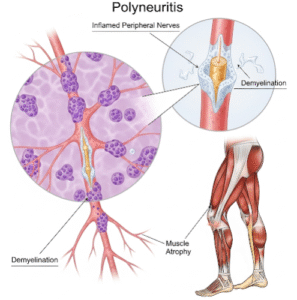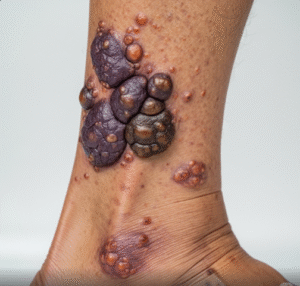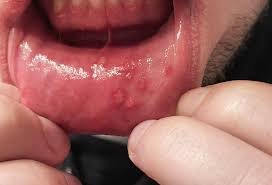Overview
Bubonic plague is a serious infectious disease caused by the bacterium Yersinia pestis. It primarily affects the lymphatic system and can progress to septicemic or pneumonic forms if untreated. Historically associated with devastating pandemics, the disease remains rare but potentially fatal.
In Korea, bubonic plague is closely monitored by public health authorities. Modern healthcare facilities offer rapid diagnosis, effective antibiotic treatment, and strict infection control measures, minimizing the risk of outbreaks. Korean hospitals emphasize early intervention, surveillance, and education for at-risk populations, including travelers and individuals exposed to wild rodents.
What is Bubonic Plague?
Bubonic plague is one of the three main forms of plague:
- Bubonic: Infection of lymph nodes, causing painful swelling called buboes
- Septicemic: Infection spreads to the bloodstream, causing severe systemic illness
- Pneumonic: Infection involves the lungs and can be transmitted via respiratory droplets
Bubonic plague is primarily transmitted through fleas that infest rodents, particularly rats, which act as reservoirs for Yersinia pestis. It can also occur via direct contact with infected animals or humans in rare cases.
Symptoms
Symptoms typically appear 2–6 days after exposure and include:
- Swollen and painful lymph nodes (buboes), often in the groin, armpit, or neck
- Fever and chills
- Headache and fatigue
- Muscle aches
- Skin lesions or bruising in severe cases
- Nausea and vomiting
- Septicemic progression may cause bleeding, shock, and organ failure
Early recognition of symptoms is critical to prevent complications and reduce mortality.
Causes
Bubonic plague is caused by infection with Yersinia pestis, transmitted primarily through:
- Bites from infected fleas, often carried by rodents
- Direct contact with infected animals, including handling tissues or body fluids
- Inhalation of infectious droplets in pneumonic cases
- Laboratory exposure, though extremely rare with modern safety protocols
The bacterium invades the lymphatic system, multiplies in lymph nodes, and can spread to the bloodstream if untreated.
Risk Factors
- Living in or traveling to endemic areas where plague is present
- Occupational exposure, such as veterinarians, laboratory personnel, or wildlife handlers
- Close contact with infected rodents or flea-infested animals
- Weakened immune system, increasing susceptibility to severe infection
- Poor sanitation or rodent infestations in residential areas
Complications
If untreated, bubonic plague can lead to severe and life-threatening complications:
- Septicemia, causing widespread infection and shock
- Pneumonic plague, which is highly contagious and affects the lungs
- Organ failure, including kidney and liver damage
- Hemorrhagic complications, such as bleeding into the skin or internal organs
- High mortality rates, historically exceeding 50% in untreated cases
- Permanent tissue damage or gangrene in severe infections
Early detection and treatment dramatically improve outcomes.
Prevention
Preventive measures focus on avoiding exposure to infected animals and fleas:
- Rodent control and hygiene in residential and occupational areas
- Use of insect repellent and protective clothing for high-risk individuals
- Avoid contact with wild rodents or infected animals
- Proper handling and cooking of animal products
- Travel precautions when visiting regions with endemic plague
- Education and awareness campaigns to recognize early symptoms and seek prompt medical care
Korean public health authorities also maintain surveillance and rapid response protocols to prevent outbreaks.
Treatment Options in Korea
Diagnosis
Diagnosis involves a combination of clinical evaluation, laboratory tests, and imaging:
- Medical history and symptom assessment, including recent animal or flea exposure
- Physical examination to identify swollen lymph nodes (buboes) and signs of systemic infection
- Blood, lymph node aspirate, or sputum cultures to detect Yersinia pestis
- Polymerase chain reaction (PCR) tests for rapid bacterial detection
- Serological testing to confirm exposure or infection
- Imaging in complicated cases to assess organ involvement
Medical Management
Treatment is highly effective if started early, typically using antibiotics:
- Streptomycin or gentamicin as first-line therapy
- Doxycycline or ciprofloxacin for less severe cases or as alternatives
- Supportive care, including hydration, oxygen therapy, and treatment of complications
- Hospitalization for severe or systemic infections
Public Health Measures
- Isolation of pneumonic plague patients to prevent human-to-human transmission
- Contact tracing and prophylactic antibiotics for exposed individuals
- Vector control, including flea treatment and rodent eradication
- Awareness programs for at-risk populations, including farmers and wildlife handlers
Prognosis
With early diagnosis and appropriate antibiotic treatment, the prognosis of bubonic plague is generally favorable:
- Most patients recover fully without long-term complications
- Delayed treatment increases the risk of septicemia, pneumonic progression, and mortality
- In modern Korean healthcare facilities, mortality from promptly treated bubonic plague is less than 10%
- Follow-up care ensures complete resolution of symptoms and prevention of relapse
Korean hospitals provide state-of-the-art infectious disease management, including rapid diagnostics, isolation protocols, and effective antibiotic therapy, ensuring that even severe cases are treated successfully and outbreaks are prevented.













